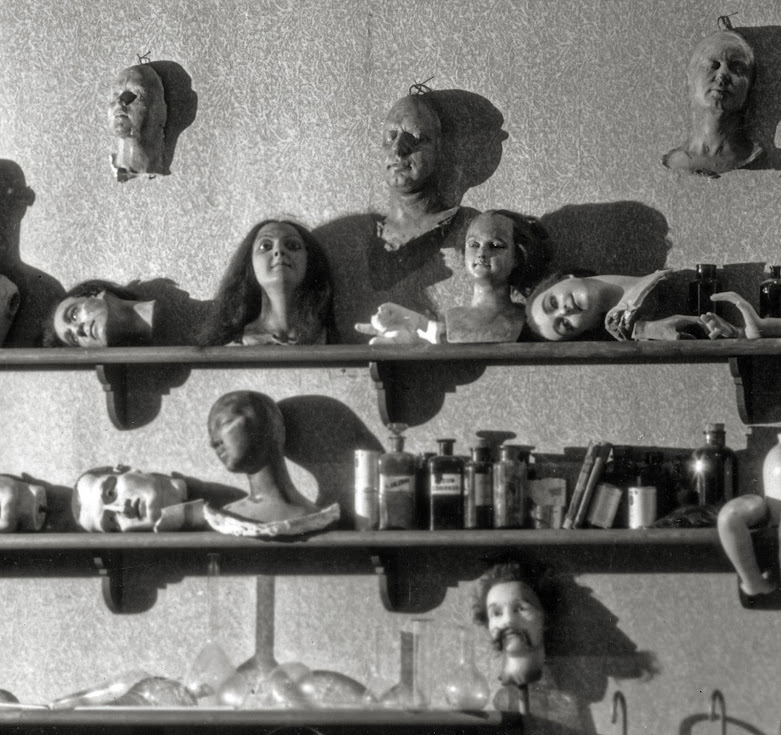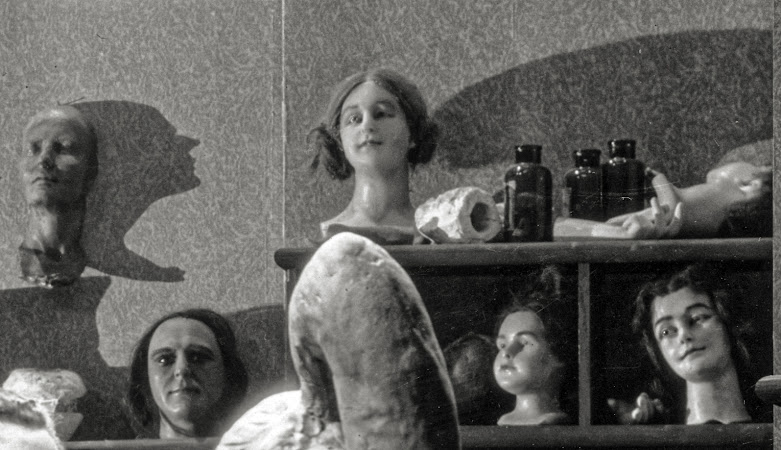Ghosts In The Room
What We Don't See Is Often What We Get
I have preached on stills before. Herewith, then, is another go. The best of stills is art --- that word again. Stills capture what is most magical about a film. We’ll never see them all because so many were taken, millions … hundreds, no doubt, for individual titles. Mystery of the Wax Museum is back on Greenbriar’s plate thanks to the images Mark Vieira sent me. You know Mark from a shelf of splendid books he authored --- Precode, Horror, Garbo, Dietrich, Jean Harlow, DeMille, each a best in respective categories. He is also a portrait photographer mentored by legendary Hollywood lensman George Hurrell. Put Vieira behind the camera for a next sitting and you too can look like Tyrone Power or Linda Darnell. Mark noticed things in the Wax Museum image at top I had not, like for instance creepy background details elusive on an 8X10 print, even an “original” circa 1933. He delved further via individual captures to draw out props and decorative flourishes we may not notice otherwise, let alone detect in the finished film.
Here is where genius of the Warner system really comes home. Note sculptured heads, each well back of foreground we see. Subliminal thrilling --- atmosphere all there if not readily visible, the feel as we know it of a classic era, things in the dark, or subdued light, that might any time come forward to surprise us. Favorites live on such fuel, our subconscious fed on Wax wonders --- we sense every element of crowded backgrounds, never mind if they are, or not, seen close. I wonder what became of creative work that was sure enough work for studio artisans, done in undoubted rush, but show me a museum, wax or otherwise, where they would not sit proudly. Speaking to what hangs proud, Mark Vieira’s Starlight Gallery offers a wide selection of prints made from original negatives, plus photo restorations of many a rare portrait and scene, representing all genres. The clarity of Vieira’s work is amazing. Images fairly jump in your lap (parallels to 3-D in terms of depth? Yes.). His are what I always dreamed stills could look like, but never quite did. The Starlight Gallery has available the Wax Museum details as an 8X10 set, which includes several other representative scenes from the film, any of which are ideal to frame or display in an album. Savor them thus, and remember those backgrounds will be watching you the next time you watch Mystery Of The Wax Museum.






1 Comments:
Dan Mercer speaks to background detail of movies and life:
Your point about background details is well taken. What we sense rather than see may lend a vivacity to a scene that would otherwise be lacking. So many movies seem so ordered as scarcely to have a life of their own, as though nothing existed for them that had not been placed there by the set designer, and that just a moment before the camera turned. Real life, even as represented on film, has not that precision or sterility. It is not so much disorder as various suborders complementing each other, as a stream that passes by an outcropping, trailing vines, or a half-submerged tree trunk, each speeding or retarding its passage. In “Mystery of the Wax Museum,” there are shelves filled with models and masks, partially completed forms, and bottles of chemicals and dyes. All these are the tangible reminders of what is going on in this place, where all that is seen is only an artifice created by mysterious means. Other films that have appealed to me with their sense of lives lived are “The Big Trail,” with its sutler’s store, or Robert Montgomery’s “The Lady in the Lake,” which better conveys the mean streets and shabby corners of Raymond Chandler’s Los Angeles better than any other adaptation I can think of. Part of what made “Star Wars” so appealing was its depiction of a science fiction world in which things were used, or even used up. Of course, if you’d really want a visual metaphor for a disordered mind, you need only let the camera prowl around my personal library, with its piles of open books, sheaves of paper, and random collections of pens and pencils.
Post a Comment
<< Home